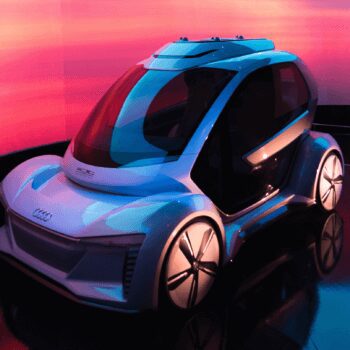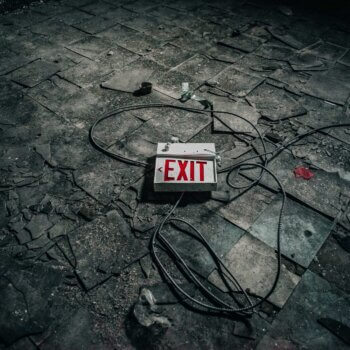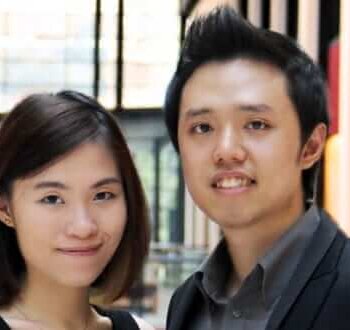Most of us would describe ourselves as having a body, a mind and a soul (or spirit), as though these are not the same thing. The soul in particular is understood as being separate, not only from the mind and its thoughts, but from the realm of the physical world, and even physics itself.
We talk freely, around the world, of reincarnation; of out-of-body experiences; of heaven and hell, whatever form they may take, in our imagination; of immortality; of consciousness; of Atman…
We have countless expressions and ideas for what exactly makes us “us”, as distinct from that which we can see or feel. The idea of “self” even transcends, for most, our own life circumstances and experiences, as though there is a “true self” to be discovered, or fed, or aligned with, while we bumble about in our bodies and minds here on Earth. We measure the soul’s arc of time by a different yardstick: it is far longer than that of our (current) life, if not infinite. But however we measure it, the quality and essence of our “beingness” — our soul — is almost always distinguished from what is tangible or measurable.
Scientifically, those of us who have lived long enough aren’t even us, anymore, on a cellular level. Our cells are constantly dying and rebirthing—a form of miniature reincarnation. Colon cells last just four days; skin cells 2–3 weeks; blood vessels, just 5 days; and skeletal muscles a full 15 years, before they, too, are replaced. Brain cells, like those in the central core of the eye’s lenses, seem to be among the only parts of us that don’t die; or at least, when they do, they aren’t replaced.
Before long, most of us isn’t us, but some faithful reproduction—a simulacrum. This is important, as we’ll revisit later.
So if countless humans — most, if not all, of us — believe in the soul’s existence as the nucleus of our “immortal self”, is it not possible that in some near or far future societal construct we can place — or find — ourselves inside of a non-human, or simulated, host?
Said another way, is it possible for us to evolve beyond needing our bodies, and into some kind of post-corporeal container?
If the soul is neither the body nor mind, how is our ability to decouple them not a foregone (theoretical) conclusion? Or, is the soul 100% dependent on a flesh-and-blood, vulnerable, and longevity-challenged host to exist?
If it is, doesn’t the notion of our soul’s dependency on a body and mind render the idea of post-mortem existence—the stage between death and rebirth—moot? Either “we”—by which I mean the soul that most of us believe to be the true “us”—can live outside of a body, or we cannot.
More problematically, why would an eternal being need or even want a severely limited consciousness, no less, as its host?
If we truly believe a sentient being created us in his/her/its/their image(s), then our answer is probably yes, we need a body and a mind for a soul to occupy. Why this would be the case, I don’t know. And the idea about what happens to us when we shed our body, and before we pick up a new one, remains unanswered, and frankly contradicts the basic premise.
Regardless, for the time being we remain utterly stuck in the dark, far not only from the inscrutability of an omniscient and omnipotent super-being, but ignorant of our own immortal selves, as well.
On the other hand, if we believe we evolved in a Darwinian sense, and that “God” or “the gods” either doesn’t/don’t exist, or that these are just proxy terms to describe physics, the life force, or the miracle of the unknowable, then the question remains:
Can we exist outside of our bodies and minds, not onlybetween our deaths and rebirths, but post-rebirth? As in, here on Earth?
Many religions contemplate rebirth in another vessel, like a mouse or an insect, or the dog that shows up on our doorstep one day, looking at us funny through eyes that remind us of someone we knew, and who is no longer with us.
A quick Wikipedia search returns 151 films made on the subject of reincarnation. This topic is clearly not only the mainstay of religion, but of Hollywood and Bollywood, as well.
In fact thanatology — the study of death in all of its dimensions — has consumed an outsized portion of our human activity, at the ironic expense of our own “here and now”.
So: to return to my question, and to put it in the context of our terrestrial host planet: can we survive our ongoing and increasingly efficient destruction of our physical environment — the Earth, and everything we currently require of it to sustain us — by transferring our souls into a less vulnerable host that requires no food, no sleep, no air to breathe—nothing but the sun’s or wind’s energy? Alternatively, can we somehow retrain or trick our souls into being reborn into a silicon chip or carbon fiber pseudo-person, instead of a cat, or insect, or another human newborn?
Is it not possible that at some near- or less-than-near future point, we will be able to point to, measure and even capture the soul — like that “Proton Pack” from Ghostbusters?
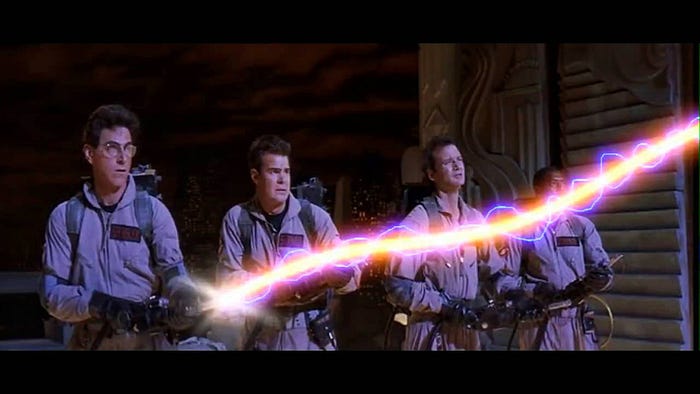
Why are we not asking ourselves these questions, and investing heavily in answers, if most of us so firmly believe that we have a soul, and that it exists within a distinct and larger cosmic context than the frail, short-lived vessels into which we are born?
Self-Imposed Limits
Few if any of us manage to fully realize our potential — our inner alignment, inner peace and inner truth — in one lifetime. In fact, many theological and human-centered dogmas — Buddhism, Hinduism, and animism among them — believe that the act of “becoming” is a multi-lifetime endeavor; and that a life well lived on this Earth is one devoted to moving toward that ultimate inevitability.
Occasionally, we are graced on Earth with cosmic beings of soulful perfection: Jesus; Mohammed: Buddha; Evan Almighty (thanks, Steve Carrell!). One of my all-time favorite movies is Wings of Desire, directed by Wim Wenders, about angels on Earth (like Peter Falk) who invisibly walk the planet, listening to people’s searching thoughts about self.
So if angels—or formerly living people—are in fact here, now, and are the reason that I can’t find that gold coin I’d given my brother right before he died, or that we hear things that go bump in the night, or feel the hair stand up on the backs of our necks when no one is near, or, or, or… can we not offer them a super-body that needn’t eat, sleep, feel or die, so that we can skip the whole “suffering human” thing and get straight to the celebration?
Am I being ridiculous?
Mind Uploading
Theoretically, we will one day soon be able to simulate minds through the process of “mind uploading”. Scanned and simulated, human brains that exist “the old-fashioned way” today will undergo digital processes that allow them — and those who interact with them — to experience processing — i.e.: psychological humanity — in a way that approximates sentient, conscious minds.
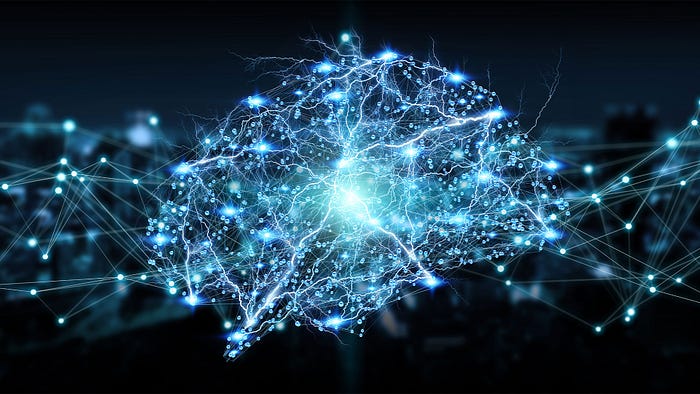
While simulating isn’t the same thing as living, per se, it does begin to blur the line with respect to what parts of that which we consider “the self” are distinct from the body and mind, vs. what parts of it can be measured, copied and made to feel as though our souls are experiencing real life, as a human being, in an artificial host.
Said another way, how much of “living”, exactly, is our perception that we are living, vs. what other people believe to be real? If we are already close to simulating consciousness in typed form today — it’s called “The Turing Test”, or “The Imitation Game” — then isn’t this just an argument about the degree of scientific sophistication we have at our disposal? Isn’t it inevitable that at some point, likely not too far away, we will make bodies that articulate fluidly, are soft and warm, and “live” with an emotional range that delights or confounds the “old school humans” who interact with them?
There’s an even longer list of films that fit this description, including some of my favorites, like the original Blade Runner.
Futurists and transhumanists — people in favor of human augmentation — believe “mind uploading” is less important than life extension. Unlike the simulators, they’re not arguing that we can capture a body-less soul in a machine, but rather we can extend the lives of the souls who are already trapped by their current hosts, and in doing so, overcome the limitations of the decaying vessels that they are. Both our bodies and our minds, post-youth, are in an unstoppable process of decay. So why wouldn’t scientific minds want to “fix” this?
No less than Google is trying to “solve death itself”. Calico, their venture (it stands for California Life Company), seeks officially to “harness advanced technologies to increase our understanding of the biology that controls lifespan.”
Forget whether or not they can do this. They’ve invested $1.5 billion in the gambit, so far, and enjoined the world’s greatest futurists, mathematicians, scientists and philosophers to tackle it.
What happens if they succeed? What happens to our souls? For the religiously minded, if we no longer die, do we also no longer reincarnate? Is this even a problem? Or, do our souls have dominion over our bodies, including the power to redirect where we end up “next time”? As in, “Whoooahhh. I didn’t sign up for this. Gonna go find me a raccoon or a possum to inhabit, and sit this one out until it runs its course.”
If we no longer die, do we also no longer reincarnate?
What happens then?
What control, exactly, does a soul have over its current vessel, or its future ones? Or, how strapped are they by the vagaries — randomness — of our inherited physiological, emotional and sociological circumstances, or of who — or what — it is into which our immortal selves will be reborn?
What if we can overcome those vagaries by virtue of teaming up — of pooling resources, to achieve transcendence? Haven’t we done that with nearly every human endeavor, includingmethods like meditation, yoga, holotropic breathing, Sufi whirling, asceticism, sensory deprivation, space travel, psychedelic medicines, brainwave synchronization, and “God helmets” — among other human constructs — in the hopes of somehow glimpsing our own cosmic immortality?
The End of Suffering
One of the greatest potential outcomes of our literal soul-searching is, in my view, the potential of merged — or super — consciousness, shared among all 8 billion souls on the planet, to presage the end of strife, disagreement and ignorance. Would this bring Nirvana… for everyone?
Some mathematicians and futurists believe the Singularity is near, maybe no more than 10 years away, and that once machine intelligence out-calculates human intelligence, it’s a quick sprint toward a solution for uploading human minds to a central hub, where every person on Earth will have access to one another’s thoughts and the breadth of our individual experiences and insights, in sum. Meaning, not only machines, but we — that is, if they don’t kill us first — will become super-beings, no longer bound by a single mind, but daisy-chained together into a collective, eight-billion-mind consciousness.
That is, if the collective intelligence of an entire species doesn’t overwhelm, then short-circuit, our comparatively puny individual minds, in a single “BZZZZZZT.”
Assuming that doesn’t happen, and we do in fact merge consciousnesses, does it even matter if the human vessels remain? Who’s in charge, and what’s the game plan?
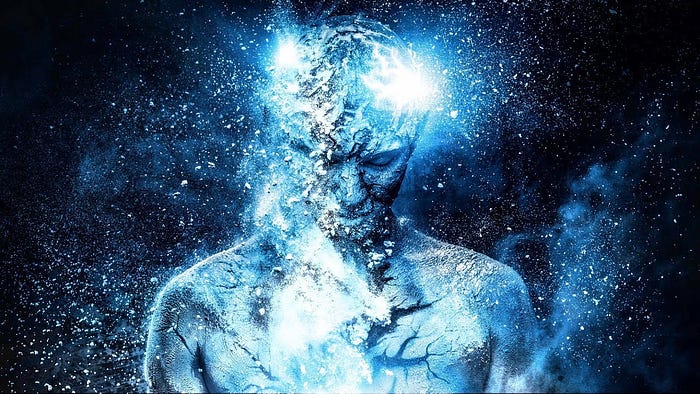
Isn’t human failing invariably the result of a single mind, poisoned or limited by something physiological, neurochemical or experiential; or that feels left out of—or wronged by—a group of other humans? Or, is our fallibility simply caused by the fact that a lone human mind has limits? Isn’t the chief cause of human fear the lack of knowing we are loved, we belong and have purpose?
What would happen if we were suddenly able to understand everything and everybody, intimately, as though we were not only family to one another, but closer still, intrinsically non-dual—merged—and fully aware of our respective and collective core fears, hopes, dreams and as critically, our innate goodness and the fact that at our cores, we are all the same?
In such a reality, wouldn’t each moral failing we each experience, or cause, whether it’s racism, sexism, abuse, prejudice of any kind, violence… feel suddenly personal, if we shared a consciousness?
In other words, doesn’t collective intelligence — like the Borg, in Star Trek, to put some cheesy color on it — spell a kind of end of individuality, and a oneness of mind?
I believe it may be, because simply put, it is the end of “the other”.
Our collective consciousness is the end of the “other”.
And “the other” is what has driven human beings to collective misery, rather than collective health, ever since we left the jungles and savannas for permanent settlements.
At the very least, it’s how many of us imagine a perfect existence — full of collective wellbeing, brimming with possibility, in which no one suffers from ailments or struggle in any way, corporeal or psychological. An eight-billion-strong consciousness is instant knowing. The Buddhists call this enlightenment. They believe — as do the Hindus, with their concept of samadhi — that a single individual can attain this over a human-span lifetime, with the right energy, investment and focus. What happens when we string multiple beings — all of us — together?
I imagine it to be something like a cosmic “KABOOM!”
So if Calico manages to solve death, we will have ample time to figure out how to merge ourselves.
The End of Death?
On the topic of solving death, I don’t think we’ll have to wait. We are on a trajectory to unlock myriad mysteries this century. Whether or not machine intelligence finds a way to link us up, Calico may be able to forestall the decay of individual systems within each human long enough to buy those of us who can afford to (the true barrier, in my view) another 10–20 years, per intervention.
The fact is that death is no more than the decay of individual systems. No one serious disagrees with that premise. A liver fails; a heart beats too many times; a group of cells metastasize; a liver hardens; a pancreas bursts… you get the idea. The majority of life-enhancement efforts aim to treat bodies no differently from the way mechanics repair or replace out broken parts—or upgrade the OS, these days—to delay the demise of a vehicle. Swap out the liver. Grow a new ear, or eye, or sexual organ. Send the nanobots in to fix this lesion, or remove that cancer cluster, or reinforce those cell walls. Switch deactivated genes back on again, to produce collagen, once more, making an eighty year old look fifteen. Put a mechanical part in to overcome the shortcoming of biological rejection…
If we develop enough workarounds for each system — through genetic manipulation, transplants, prosthetics, surgeries and drug therapies fueled by “big data”, as Calico is collecting today, we may be able to forestall death quite effectively, within the next few decades.
Maybe much sooner.
In addition to the strategies listed above, Calico has some morbid ideas — like “cryonics” in which heads are suspended in liquid nitrogen to “preserve” them indefinitely, until we know what to do with them.
No matter what, the human preoccupation with forestalling death is firmly at odds with the religious narratives most of those same humans believe (or wish to) deeply: that no matter what happens in this life, our souls guarantee we get an unlimited number of do-overs.
So whether you believe in infinite do-overs or a one-life pass at solving death, take a chill pill. We have you covered.

Final Thoughts
I think it’s fair to say that no human on Earth knows for sure what we are. That includes measurable things like whether our minds and bodies are distinct things, given that both are made of matter, and without one, the other doesn’t function. So the idea of a “mind-body” seems to be a more appropriate rubric to explain, at the very least, the tangible parts of us with which we interact, daily.
Our souls remain inscrutable. But that’s not stopped us from obsessing over the subject. Every society, every religion, every era and every scientific inquiry at some point comes up against what it is to live, and whether or not that life is finite.
The answer we’ve all come up with — barring the nihilists, atheists and skeptics — is that there is something more to “us” than we can see and touch; and that this thing transcends death itself.
If correct, that’s pretty huge, because death, like birth, is the only thing we can be absolutely sure every human will experience. So the answer to this quandary is of epic consequence.
Imagine pooling our collective intelligence — our collective consciousness — and bringing it to bear on that polemic. Imagine what would come of a definitive answer to life’s most inscrutable problem: What happens when I die? A networked multi-billion-human mind, or an artificial one as powerful, if not as human, could bring us there.
There are two paths such a powerful resource could take. One is the end of death — whether whole-person or just that of our consciousness — which by default would render the discussion of souls moot. If we don’t die, then we aren’t reborn, which means the gap between those two acts would no longer occur. The other path is enlightenment, by which I mean a definitive understanding of our place in the universe, on Earth, and in our own mind-bodies. This eventuality could spell the end of suffering; of a world in which each human knows its place among others, and works constructively — no longer out of fear — to make our time on Earth, and perhaps even between lives, Nirvana.
Either development—the end of death or the end of suffering—would be a boon for humankind like no other it has experienced.
It all comes down to what it means to be human, whether or not we have a soul, and that technology — as fearful as we are of it, today — may be the last great hope humans have of achieving what near-every one of us dreams of:
Inner peace.



